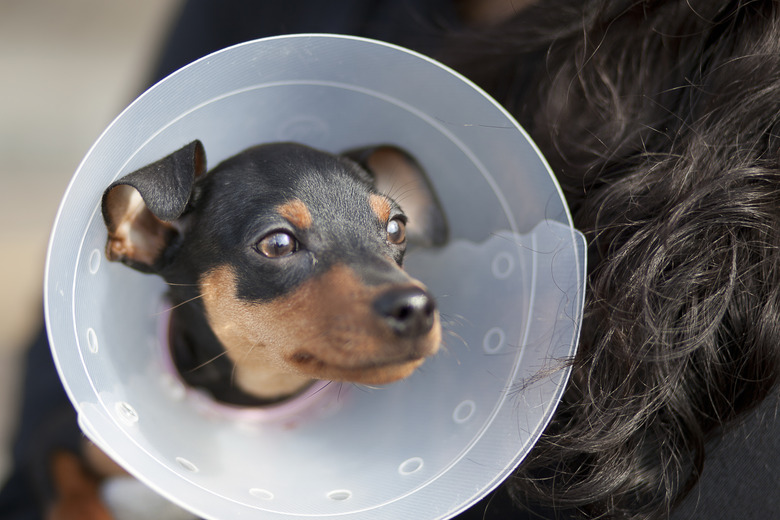How To Help A Dog Cope With A Cone
The lampshade. The Elizabethan collar. The cone of shame. No matter how you phrase it, chances are your dog isn't going to love the idea of having to wear a cone while a wound heals. And just sticking a cone onto his neck probably won't go over too well either. If your dog has to wear a cone, however, you can help to make the transition a bit easier for him in a number of ways.
Understand the cone issue
Understand the cone issue
In order to help your dog cope with a cone, it's important to understand just why cones bother some dogs so much. Plastic cones restrict your dog's ability to move, which can be scary in itself. However, they also amplify sounds and limit your dog's field of vision. This can make for a frightening sensation for your dog, and she may act nervous or upset when wearing the cone.
Find the right cone
Find the right cone
For a cone to be effective and safe, it needs to fit your dog correctly. Your vet can provide you with a cone that's appropriately sized for your dog. When wearing the cone, your dog shouldn't be able to turn his head and lick the wounded area. The cone should be secure around his neck so that he can't pull it off, but it shouldn't be so tight that it digs into his skin.
Introduce the cone gradually
Introduce the cone gradually
When it's time to introduce the cone to your dog, do so in a calm environment. Your dog may react by trying to paw at the cone, and it's possible that she'll panic a bit and even try to run away. Stay calm and reassure your dog that she's fine and that the cone won't hurt her. Don't remove the cone when she's anxious, since this could teach her that when she reacts badly, she's rewarded by having the cone removed.
If you know ahead of time that your dog will be having a procedure and will need to wear a cone, start introducing it gradually before the surgery. Have her wear the cone for short sessions and shower her with plenty of treats. Gradually increase the duration of the sessions so your dog is well-accustomed to the cone by the time she actually needs to wear it.
Set up your home
Set up your home
If possible, provide your dog with an obstacle-free area to make it easier for him to get around while wearing the cone. Dogs have a tendency to catch the cones on furniture and any other obstructions that are around, so clear your hallways, pick up any excess clutter or furniture, and give your dog as much space as possible.
Monitor your dog
Monitor your dog
If the cone is irritating or rubbing your dog's neck, she won't tolerate it well, and who can blame her? Check the cone daily to make sure that it isn't digging into your dog's neck or rubbing her skin. If you find that the cone is irritating your dog, then you may need to buy a cone in a different size.
Monitor your dog carefully while she's getting used to the cone. Don't exercise her with the cone and make sure that she understands that she can eat and drink with it on. You can make it easier for her to eat by raising her food and water dishes. If you're around to supervise your dog, you may also want to remove the cone at mealtime so she can eat stress free.
Explore alternatives
Explore alternatives
Some dogs just don't take well to cones, no matter what you do to make the transition as easy as possible. In this case, you may want to explore alternatives to the traditional plastic cone.
Some companies now produce softer cones that are more flexible and a bit more comfortable than traditional plastic cones. There are also blowup or foam donut-shaped collars that aren't as overwhelming as cone collars can be in terms of affecting a dog's hearing or vision.
Other options include using a bitter spray around the wound to deter the dog from licking. Depending on where the wound is, you may be able to cover it with a bandage and keep a close eye on your dog to stop him from chewing it. For a wound on your dog's body, covering the area with a T-shirt may help to deter licking, but you'll still need to closely monitor him.
If you're struggling to find a solution that works for your dog, give your vet a call for some help.
